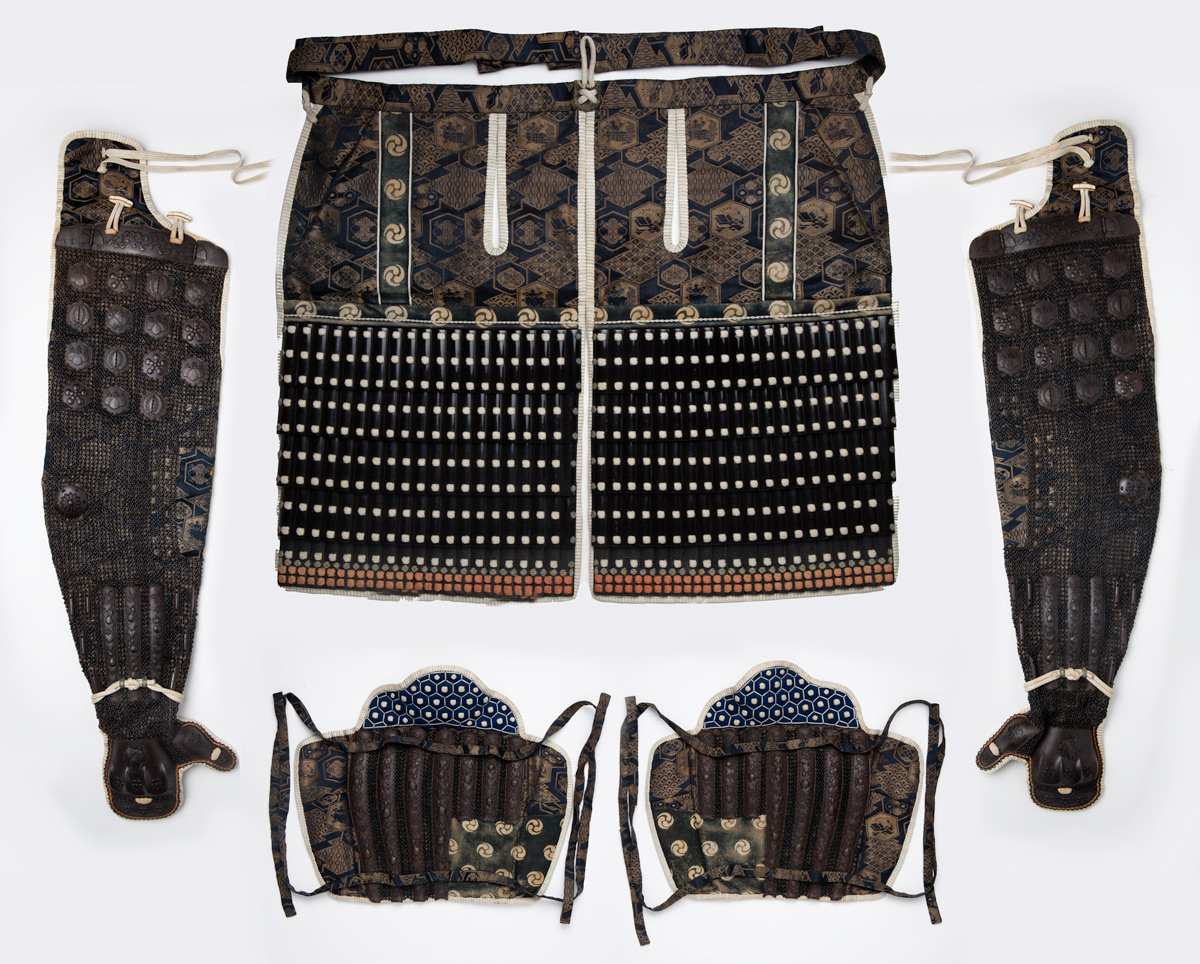Sangu - The "three elements" of the Japanese armor
When we buy an original samurai armor, we usually begin to evaluate the kabuto (samurai helmet), which can give us an initial indication of the general quality of the yoroi. The eyes then move on the menpō (samurai mask) and finally on the dō (cuirass), which is generally coordinated in the style with the sode (shoulder guards). The remaining three elements generally do not have qualitative features worthy of note, but we must observe them carefully because sometimes these armor’s parts offer really interesting points of evaluation.
First of all, it’s worth knowing that these three elements are combined with the term "sangu". Specifically, these protections are:
- kote, for the arms
- haidate, for the thighs
- suneate, for the shins

Kote and suneate are usually coordinated and have a homogeneous style, especially for the plates that protect the forearm and shins. The qualitative elements that we must evaluate on these armor’s parts are normally the decorations that can be added to the plates. These are generally of three types: uchidashi, which are embossed designs, kirigane, cut out decorations applied on the plates, or painted in maki-e gold lacquer. These were introduced already in the Muromachi period by the smiths of the Haruta school and spread among the armorers of the associated schools, primarily those of Saika and Kaga regions.
Sometimes the kote can carry on the hand protection (tekko) the heraldic symbol (kamon) of the original clan of the samurai.
The haidate, although classifiable with numerous variants, appears substantially as a reinforced chain-mail or as a flat surface of overlapping plates. In this case the large lacquer areas offer the ground for lacquer decorations, which can carry the simple samurai kamon or complex decorative figures made in maki-e urushi lacquer.
Copyright © 2016 - giuseppe piva - VAT: 05104180962

